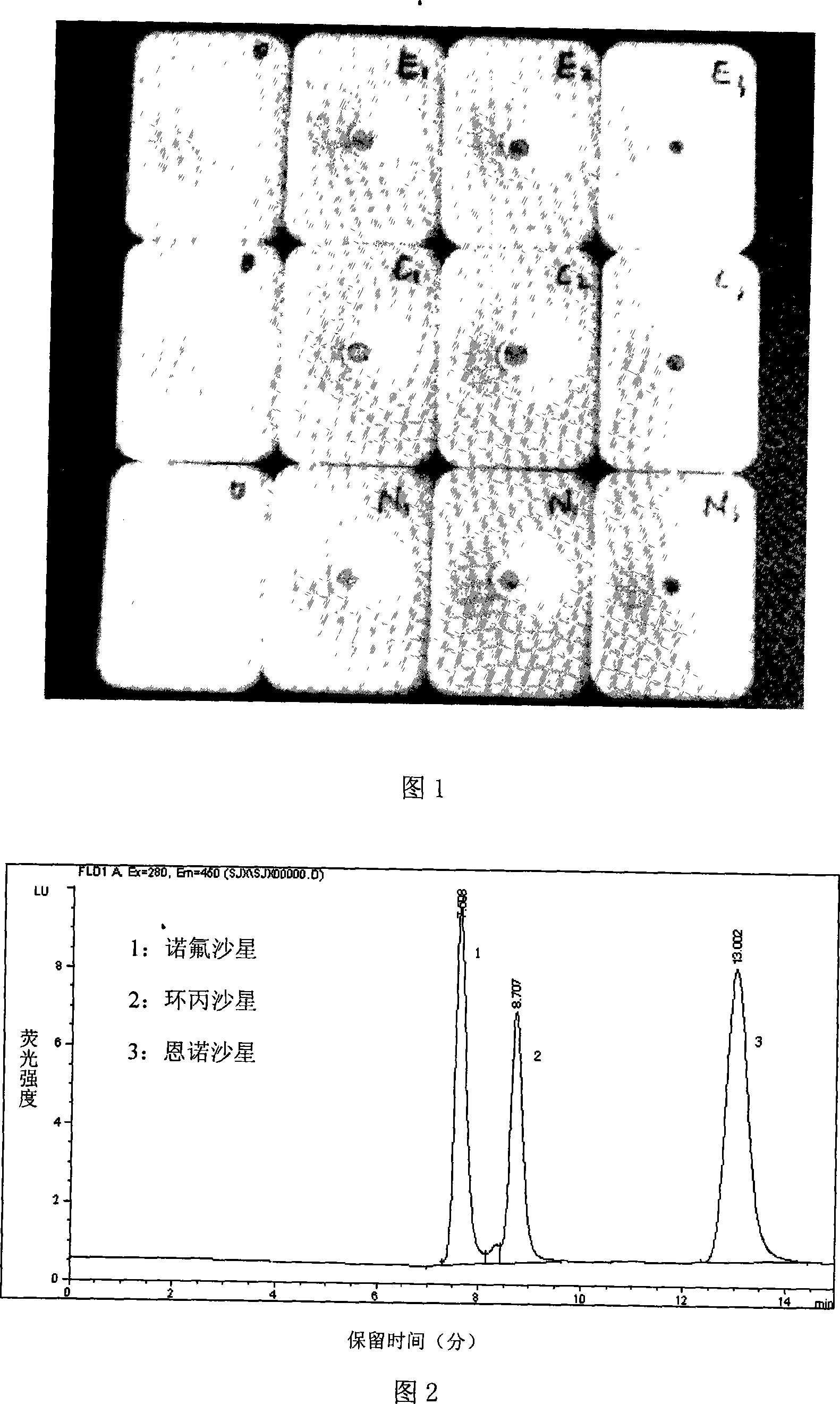Visualized detection method aiming at aquatic food fluoroquinolone analog drug residue
A fluoroquinolone and detection method technology, applied in the field of detection of drug residues in aquatic food, can solve the problems such as cumbersome, it takes several hours at the fastest, poor stability of detection results, difficult on-site detection, etc. Easy to carry and assemble and shorten the analysis time
- Summary
- Abstract
- Description
- Claims
- Application Information
AI Technical Summary
Problems solved by technology
Method used
Image
Examples
Embodiment 1
[0028] Example 1: Rapid detection of enrofloxacin, ciprofloxacin and norfloxacin residues in eels
[0029] 1. Preparation of antibodies
[0030] First prepare phosphate buffer (0.01M, pH7.4, referred to as PBS): take NaCl 8g, KCl 0.2g, Na 2 HPO 4 ·12H 2 O 2.9g, KH 2 PO 4 2.0g, add double distilled water to 1000mL, pass through 0.22μm membrane, and store at room temperature.
[0031] The carbodiimide synthesis procedure is as follows: dissolve 15mg EF, 5.2mg NHS, 9.3mg EDC in 0.5mL dimethylformamide (DMF for short), shake at room temperature for 1.5h; centrifuge at 3000r / min for 30s, add 2mL supernatant The PBS solution containing 25 mg of carrier protein (bovine serum albumin) (pre-dissolved with 33% DMF) was shaken overnight at constant temperature (150 r / min, 4 °C); DMF was dialyzed against PBS solution, and the amount of DMF was gradually reduced until PBS was completely used.
[0032] Healthy BALB / C mice aged 6-8 weeks were selected for immune test. Blood was coll...
Embodiment 2
[0055] Embodiment 2: the detection effect of the present invention and its comparison with HPLC method
[0056] Table 1 Detection results of spiked eel meat by HPLC (n=3)
[0057] Add Concentration
[0058] At present, the requirements for fluoroquinolone drug residues in food at home and abroad vary according to different drug varieties and different food types, but the minimum detection limit is generally required to be above 50 μg / kg. Using the detection method of the present invention, when the added concentration of enrofloxacin and ciprofloxacin is 20ng / mL, it can be judged as positive by naked eyes, while the detection limit of norfloxacin is at 50ng / mL; The results are basically the same; the recovery rate of the pretreatment method can basically be guaranteed to be above 70%. This shows that the main performance of this method, such as sensitivity and accuracy, can fully meet the requirements of actual detection; but the detection time only takes 25-30 mi...
PUM
 Login to View More
Login to View More Abstract
Description
Claims
Application Information
 Login to View More
Login to View More - R&D
- Intellectual Property
- Life Sciences
- Materials
- Tech Scout
- Unparalleled Data Quality
- Higher Quality Content
- 60% Fewer Hallucinations
Browse by: Latest US Patents, China's latest patents, Technical Efficacy Thesaurus, Application Domain, Technology Topic, Popular Technical Reports.
© 2025 PatSnap. All rights reserved.Legal|Privacy policy|Modern Slavery Act Transparency Statement|Sitemap|About US| Contact US: help@patsnap.com

